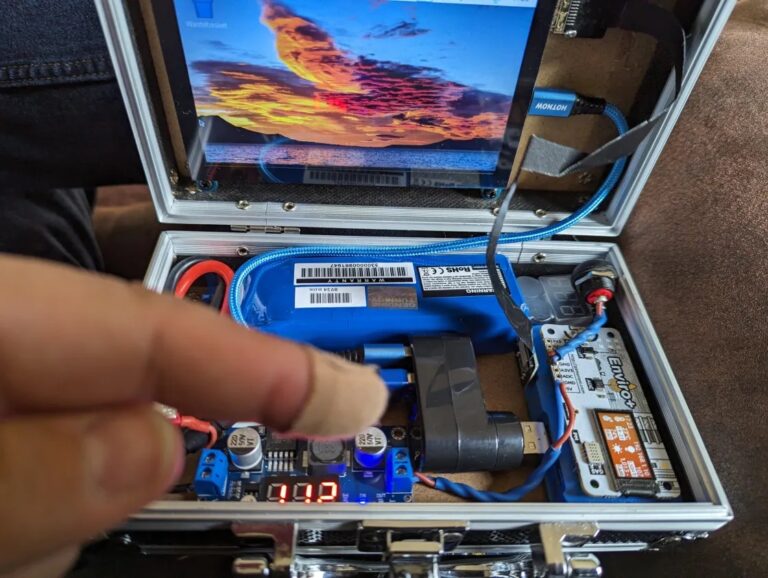A 3S LiPo gives approx 11.1V, which is obviously too much for the Pi which wants 5-5.2V. I grabbed hold of an adjustable buck converter that takes a high power feed and converts it (steps it down) to whatever voltage you need, courtesy of a small adjustment pot at the top. Here it is with the pot turned to approximately what I needed. I later adjusted it to 5.1V to give the Pi some headroom.
You’ll see that the output of the converter goes into an Enviro+ board that is plugged into the Raspberry Pi Zero 2 W. This is where things get a little convenient. I knew I wanted some kind of sensor display for the project, and I happened to have an Enviro+ already. With a little experimentation, I found that I could take the voltage out of the converter and “shove” it into the GND and 5V pins of the Enviro+ and this would power the Pi. Marvellous. There is a cheaper board – the plain Enviro – so you might want to consider that. I also realised that I could add a control button to the Enviro+ by soldering a button to the other GND and #4 (GPIO 4), so I did that as well. The nice thing about the Enviro is that it breaks out “just enough” pins to make it easy to add things on. Those I2C (SDA/SCL) pins are just begging for more sensors – I don’t have any more room in the case, though!
https://blog.adafruit.com/2024/02/09/tiny-raspberry-pi-cyberdeck-raspberry_pi-piday-raspberrypi/

